A very noble, ancient and glorious family
The main branch of the Bourbon family dates back to the 8th century AD: its founder, Hildebrand, was one of Charles Martello’s brothers, and therefore Charlemagne’s great uncle. Historical documents already provide certain data from the 9th century on the Bourbon Lords, vassals of the Earl of Bourges, which were the owners of the castle bearing the same name (today Bourbon-Archambault). A document of that time gives information on Aimar, founder between 916 and 922 of Souvigny Monastery at Moulins, called “miles clarissimus”, whereas another document of 936 gives information on his brother Guido, Earl of Bourbon. Another document of 953 talks about Aimone I, Aimar’s son, and describes him as a man powerful enough to deny his vassalage to the Earl of Bourges and assert his dominion over the Bourbon fief.
Archembaud I (980-1031), Archembaud II (1034-1078), who gave himself the title of prince and earl of Bourbon, and Archembaud III (1078-1105) succeeded him. Archembaud III’s son, Archembaud IV (1116-1171) had to succeed his father, but his uncle Aimone II (1105-1116) usurped the throne and started a new lineage with his son, Archembaud V (1116-1171), who succeeded his father and tied blood relations with the Capetians by marrying Agnes, Countess of Savoy and sister of Alice, wife of the King of France Louis VI.
He took part in the Crusades and distinguished himself in the battles, but lost his only son at young age. His son’s daughter, Mathilda (1171-1215) – whose mother was Alice of Burgundy – became the only heir of his titles and properties.
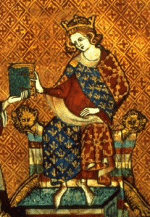
After a first unhappy marriage, Mathilda married a brave general of King Philip Augustus, Guy de Dampierre, so brave that their son, Archembaud VI the Great (1215-1243) – who started the Bourbon-Dampierre family – inherited larger territorial fiefs. His son, Archembaud VII opened up again the problem of succession since he died in Cyprus, while participating in a Crusade, and left two daughters who had both married one of the two sons of the Duke of Burgundy. His titles went first to Mathilda II (1249-1262), and then to her sister Agnes (1262-1288). At that point the event destined to change the future of the Bourbon family occurred. Agnes’ daughter, Beatrice (1277-1310) married Robert of Clermont, sixth son of St. Louis IX, King of France.
In this way the princely branch of the Bourbon family found its origin, since they had now married into the main branch of the Capetians, Kings of France, and therefore direct descendants of St. Louis IX and Charlemagne (from whom they inherited the symbol of the French fleur-de-lis).
The Ducal Line
Robert and Agnes’ son, Louis I (1310-1341) got the title of Duke from King Charles IV of Valois (the direct descent of the Capetians had died out in the meanwhile). But that lineage had not the best future. So we will leave it aside and follow instead the lineage of Louis I’s third son, James I (1342-1361), a hero of war together with his elder son (both died on the battlefield), who got the titles of Constable of France and Earl of La Marche (and other fiefs).
His heir was his son John (1361-1393), he too a brave warrior, who married the heiress of the earldom of Vendôme, which he gave to his second son Louis (1393-1446), the founder of the Bourbon-Vendôme line. In short, we list: John (1446-1478), his son Francis (1478-1495), his son Charles (1495-1537), who got the title of Duke from King Francis I in 1515 and could hand it down to his heirs, his son Antonio (1537-1562), heir of the Duchy and King of Navarre thanks to his marriage to Joan of Albret.
The Rise to the Throne
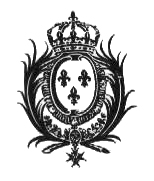
(with the fleurs-de-lis, symbol of Charlemagne’s royalty)
At this point, this branch of the Bourbon, although cadet, became the most important one because the other branches died out and because of the royal title of Navarre, so that Antonio started to openly express his designs to conquer the Throne of France. This claim was supported by the tragedy of the wars of religion in France between Catholics and Protestant Huguenots. Antonio became the head of the Huguenot party and started a civil war against the Guise family and the Royal House represented by the three sons of King Henry II (who died prematurely in 1559) and Catherine de’ Medici.
The Royal Line of France

After Antonio’s death, his son Henry – the real winner of the Wars of Religion since all the children of Henry II and Catherine of Guise had died – continued his father’s policy.
Henry wanted to go to Paris and be crowned King there, but the city strongly opposed his will and imposed him to deny Protestantism and convert to Catholicism if he wanted to become King of France. Henry accepted and in 1594 he was welcomed in Paris and crowned King of France and Navarre in God’s name and with the papal recognition. The Bourbon had become Kings of France.
Becoming King in 1594, Henry of Bourbon took the name of Henry IV, King of France and Navarre (1594-1610). After him, the Throne went to his son Louis XIII (1610-1643) under the regency of his mother Maria de’ Medici until he came of age and then, at his death, to his son Louis XIV, who was then aged just five, under the regency of his mother Anne of Austria helped by Mazarine.
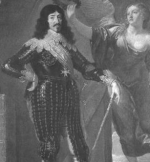
Louis XIV, the Roi Soleil, ruled for a very long time (his was the longest of all reigns if we count its duration from 1643, the year of his father’s death, in which he officially became Louis XIV King of France and Navarre, although under the regency of his mother).
Even if we start to count from 1661 – the year in which Mazarine died and Louis XIV took full possession of the sovereignty also from the point of view of political power (he proclaimed that he was “Prime Minister of himself”) – his reign was one of the longest.
Until that moment, the Bourbon Family held only one Throne, the most important and glorious in the world together with the Throne of the Sacred Roman Empire (in fact, the two Thrones had their origin in Charlemagne).
In Spain, the Habsburg dynasty reigned from the time of Charles V. In 1556 the Emperor of the Sacred Roman Empire divided his vast dominions between his brother Ferdinand – whom he gave the empire dominions and the title of Emperor – and his son Philip II, to whom he gave the Throne of Madrid and all overseas and European dominions among which the viceroyalty of Naples and Sicily. The line of the Habsburg-Spain was originated in this way, in parallel with the main line of the Habsburg-Austria who held the imperial title.
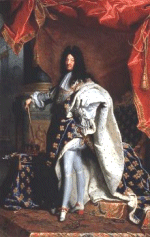
At the end of the XVII century, the Spanish line died out with Charles II, who had no direct heirs. The problem of the succession to the Spanish Throne arose. Both Louis XIV and the Emperor Leopold I of Habsburg claimed rights over it; in fact both had married one of Charles’ sisters (the King of France had married the elder, the Habsburg Emperor the younger).
For several reasons, Charles II of Habsburg in his testament appointed as sole heir Philip of Anjou, nephew of Louis XIV and son of the Dauphin, with the clause that he had to renounce his rights over the Crown of France; secondarily he appointed the Archduke Charles of Habsburg, second son of the Emperor Leopold.
Charles II died in 1700 and Philip of Anjou ascended the Throne of Madrid with the name of Philip V.
This provoked the reaction of Austria and also the other great powers that were afraid of an excessive strengthening of Louis XIV (who already acted as real lord of Spain); therefore these powers supported the candidature of Charles of Habsburg. The War of the Spanish Succession began.
The Bourbon on the Throne of Spain-Philip V and the War of Spanish Succession
Born in Versailles on 19 December 1683 from Prince Louis, Dauphin of France, and Maria Anne of Bavaria, the Duke of Anjou was only seventeen when he inherited the Crown of Spain.
Philip V was unprepared to the task of king, but Louis XIV watched over him and through him expected to rule over Spain: to help him, he established a State Council formed by experienced ministers from Colbert’s school who began to implement reforms also in Spain. His marriage to the thirteen-year-old Maria Louise Gabriella – daughter of Duke Victor Amadeus II of Savoy – was a blessing for him. The wedding was celebrated by proxy in Turin on 11 September 1701. The Queen was clever and full of energy.
A rebellion broken out in Naples forcing him to leave for Italy. He gave the regency to his young wife, who helped by the clergy, government people and mainly Princess Orsini (the “camarera mayor” deliberately chosen as her lady-in-waiting by Louis XIV) protected the French interests at the Court and was up to her task. After restoring order in Naples, the break out of the War of Spanish Succession forced Philip to leave for Piedmont and Lombardy, where he fought against the Austrian army of Archduke Charles and showed to be a brave soldier. Fortune would have smiled on him if the Netherlands and England had not allied with Austria and changed in a decisive way the outcome of the war.
The enemy fleet was already entering the harbour of Cadiz and occupying southern Spain, while in Madrid Charles of Habsburg was proclaimed Charles III King of Spain.
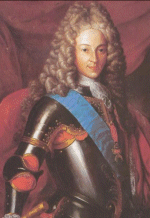
In 1709 even Louis XIV began to leave his nephew to his destiny, but Philip, also supported by his loyal wife and by Princess Orsini and the Castilians found the necessary inner strength to resist and continue his fought for his Throne. In the end also his grandfather helped him in an active way.
However, he was also helped by the fact that, since Emperor Leopold and his first-born Emperor Joseph I had both died (the latter without heirs), the imperial crown went to Charles of Habsburg, who took the name of Emperor Charles VI. At this point, the powers that had supported him against Philip began to withdraw: in fact, if Charles VI had obtained also the Kingdom of Spain and its dominions, the same situation of Charles V would have occurred again, and Louis XIV could not allow this to happen, even if he had to cause a total war in Europe. Nobody liked this prospect.
The war lasted until 1712, when the peace negotiations began and Philip V had no other choice but to choose between his rights to the French succession and the Italian territories on one side, and the Kingdom of Spain on the other side, by renouncing the Italian territories in favour of the Empire (in this way the viceroyalty of Naples and Sicily went back to the Habsburg of the Austrian line).
On the other hand, the heirs to the French Throne committed themselves to renounce any right to the Spanish Throne and by the Utrecht Treaty of 1713 signed by France, Great Britain, Spain, Portugal, Prussia and Savoy, Philip V was recognised as founder of the Bourbon-Spain dynasty; but only provided that he renounced all his rights to the French crown and provided that the main French branch renounced their rights to the Spanish crown.
In this way, now the Bourbon family reigned over two separate crowns: the French crown with the Roi Soleil (still alive until 1715, when he died and his grandchild Louis XV became king under the regency of the Duke of Orleans) and the Spanish crown with Philip V.
In February 1714 Queen Maria Louise Gabriella died; a year later, the King married Elisabeth Farnese, heir to the Parma and Piacenza Duchy, a woman as clever and skilful (and perhaps even more) as his first wife. Tired of his long subjection to Louis XIV, Philip V, of poor health and prone to depression, completely entrusted his wife and Cardinal Giulio Alberoni (a man of great intelligence) with the government.
The Italian influence replaced the French one at the Court: Nino Cortese, who wrote the page on Philip V in the “Enciclopedia Italiana” made the following remark: «And that was a time for revenge, since Spain then tried to reconquer part of its old and now lost positions in Europe». Elisabeth Farnese after a ten-year policy succeeded in assuring the Kingdom of Naples and the Duchy of Parma and Piacenza to her two sons.
In January 1724 Philip V abdicated in favour of his son, the Prince of the Asturias (born 16 years before from Maria Louise Gabriella) who had already married Elisabeth of Montpensier, daughter of the Duke of Orléans. He was crowned as Louis I King of Spain. Stroke by smallpox, the young king gave back his crown to his father and died after a few months, and Philip – against his will – had to be king again.
However, the real protagonist now was Elisabeth, and she had a very precise goal: assure the Italian States to her children.
Philip died in 1746. The throne went to his other son, the one he had from his first wife, Ferdinand VI, who had no heir and then in 1759 to Charles, son of Elisabeth, already King of Naples with the name of Charles III, who assured the succession of the Spanish branch of the Bourbon Family to the Spanish Crown.
The Masterpiece of Elisabeth Farnese-Another Throne and a Duchy to the Bourbon
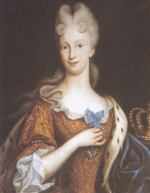
In 1714, Cardinal Alberoni had arranged the marriage between the then widower Philip V and Elisabeth Farnese, born in Parma in 1692 (she would die in Madrid in 1766). Elisabeth immediately showed what stuff she was made of by bravely dismissing Princess Orsini and looking for support from Cardinal Alberoni.
She gave Philip three sons (one of them became Archbishop of Toledo) and a daughter, and all her policy as Queen was based upon her strong desire to assure the Throne to her sons (in Spain, the heir was Ferdinand, the son that Philip had had from his first marriage, and therefore Elisabeth’s policy aimed at reconquering Naples) and the Duchies of Parma and Piacenza (of which she was the heir due to the fact that the Farnese Family was doomed to die out with Duke Antonio, who died in 1731).
The War of Spanish Succession was over after 14 years of fighting, and the Treaties of Utrecht (13 July 1713) and Rastadt (7 March 1714) were signed with the following purpose: “conservandum in Europa equilibrium”.
From the birth of Charles in Madrid on 20 January 1716, the Spanish foreign policy would try and obtain (through a series of operations started with the solemn entrance of Spain in the Quadruple Alliance through the Hague Treaty of 17 February 1720) the recognition of Charles’ rights to the double succession of Farnese and Medici. After the Congresses and Treaties of Cambrai (1721), Vienna (1725) and Seville (1729), the Empire would accept this situation with the second Treaty of Vienna in 1731. Charles was therefore heir to the Duchies of Parma and Piacenza under the regency of his grandmother, the widow Duchess of Parma, and at the same time in Florence he was proclaimed the heir to the last Grand Duke of Tuscany who become co-tutor of the young prince.
In this way, Elisabeth Farnese achieved her first goal, but the King of Spain or his successors could not claim any right to the Italian States or be tutors of their heirs. Here we see the first root, the real motive of the existence of the two Families: Bourbon Two Sicilies and Bourbon Parma.
Under the first “family pact” of 1734, which caused the Spanish intervention in the War of Polish Succession, Charles reconquered Naples and Sicily after the decisive battle of Bitonto on 25 May 1734 and was recognised as King of Naples and Sicily by the Treaties of Vienna of 1735; in exchange he had to renounce the Duchies of Parma, Piacenza and Tuscany which would go (without Tuscany but with Guastalla) to his younger brother Philip, Head of the Royal House of the Bourbon-Parma, second-born of Elisabeth Farnese and son-in-law of Louis XV.
On 18 October 1748, when Spain was ruled by Ferdinand VI, son of Philip V who had no heir, the Treaty of Aachen (by a special clause) ruled the succession of King Charles to the Spanish Throne. This was the situation when, on 10 August 1759, Ferdinand VI died without direct heirs.
Charles, King of Naples and Sicily, was then called to the Spanish Throne; however due to a fundamental law of the Bourbon-Spain Family known as “New Regulation for the Succession of these Kingdoms”, followed just three days later by his Proclamation of 6 October 1759, Charles become King of Spain, renounced the Throne of Naples in favour of his son Ferdinand and the division of the two Royal Families was set up forever.
In particular, King Charles stated that «the line of Succession I have established will never lead to the unification of the Kingdom of Spain and the Italian Dominions, so that either the sons or the daughters of my lineage mentioned above can claim rights to the Italian States only if they are not already declared Kings of Spain or Princes of Asturias or to be declared as such».
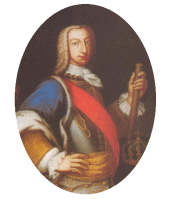
Therefore, the descendants of Childeprando (as well as Charlemagne and St. Louis IX) now sit on four thrones of France and Navarre, Spain (with its domains), Naples and Sicily, and the Duchies of Parma and Piacenza.
Four families, a single branch, none of which can claim anything on the domains of the other three, but they are united – not only by the ties of blood – the “family pact” that the allies against domestic and foreign enemy.





